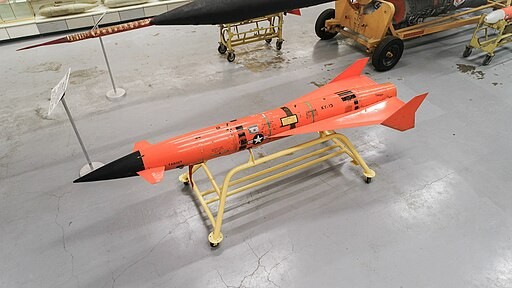The aerospace industry is undergoing a significant transformation in recent years. Many startup companies work on cutting-edge technologies that would reshape our future. Just recently, a tech company based in Houston has reported its latest milestone in developing an engine that would enable hypersonic flights.

(Photo : Wikimedia Commons/ Mts6789 )
Supersonic Drone Engine
On February 24, 2024, the flight test drone of Venus Aerospace successfully completed its inaugural flight. The vehicle was dropped from an Aero L-29 Delfin aircraft at a height of 12,000 feet (3,657.6 meters) and accelerated to a top speed of Mach 0.9. Measuring eight feet (2.44 meters) and weighing 300 pounds (136.08 kilograms), it flew for 10 miles (16.09 kilometers) under the power of a hydrogen peroxide monopropellant engine.
The engine was not fired at full thrust since the location of the test flight is an unspecified range in the US. This area did not permit flight faster than the speed of sound, according to Venus Aerospace chief technology officer Andrew Duggleby.
The completion of the long duration run was made possible using a mode of propulsion that is different from a chemical engine. Traditionally, a rocket engine uses a propellant and an oxidizer injected into a combustion chamber where they burn and produce a very energetic exhaust plume.
Pushing the Hypersonic Technology Forward
The first powered flight came as Venus Aerospace announced a long-duration test firing of its rotating detonation rocket engine. This vehicle is the company's experimental approach to propulsion which could be about 15% more efficient than a conventional chemical rocket engine.
What makes a rotating detonation engine different is that a wave of detonation travels around a circular channel. This motion is sustained by the injection of fuel and oxidizer, producing a shockwave that travels outward at supersonic speed.
Venus Aerospace develops this engine in collaboration with the US Defense Advanced Research Projects Agency (DARPA). According to the company, its long-term ambition is to develop a commercial aircraft which can travel at Mach 9, far faster than any previous aircraft. It aims to use such an engine in testing hypersonic weapons and defense technology.
Based on its latest test, the company is increasingly confident that it will be able to combine its rocket engine with air-breathing technology to create a rocket-based combined cycle engine. The air-breathing technology works by using the forward motion of the engine to ingest air for combustion. If it is successfully made, such an engine can allow Venus Aerospace to observe excellent performance at a wide variety of velocities and altitudes. While this idea has been largely theoretical until recently, it is mostly developed in universities than pursued for commercial purposes.
According to Duggleby, Venus Aerospace is considering various options for its next test. If it can identify a range for supersonic flight, it can attach its existing rotating detonation engine to the eight-foot drone. With its firing ring that measures 4 inches (10.16 centimeters) in diameter, the current engine can produce about 1,200 pounds of thrust. If Venus Aerospace opts for this route, such a test can take place later this year, going for Mach 2 or 3.
Another option is to move to a larger 12-foot vehicle using the existing engine. While this might not be ready for flight until 2025, it would have the advantage of generating revenue in the near term as a hypersonic testbed for the US military. This larger vehicle is expected to reach Mach 4 or Mach 5.
RELATED ARTICLE: Hypersonic Flight Race: NASA, ANL Develops Aircraft Engine Simulation Using AI and Machine Learning
Check out more news and information on Hypersonic in Science Times.











!['Cosmic Glitch' in Einstein's Theory of General Relativity Could Be Explained in This New Scientific Tweak [Study]](https://1721181113.rsc.cdn77.org/data/thumbs/full/53435/258/146/50/40/cosmic-glitch-in-einsteins-theory-of-general-relativity-could-be-explained-in-this-new-scientific-tweak-study.jpeg)


